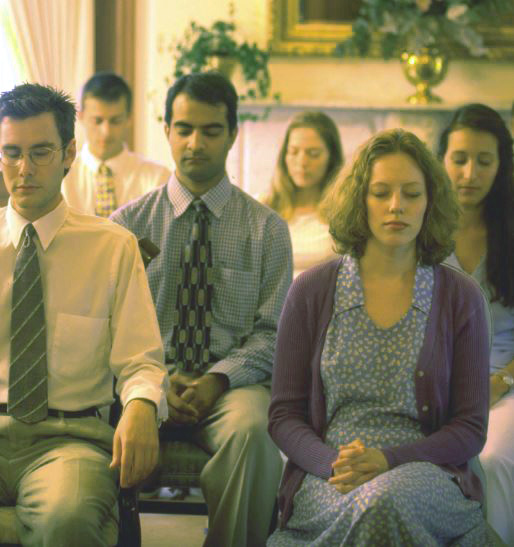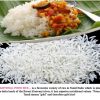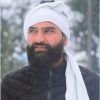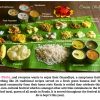Goa is abuzz with excitement as vintage bike and car owners, users, collectors and fans are decking […]

BECOMING INDIAN – 7
Jan 12 - Jan 18 2019, MEMOIRS January 11, 2019In his continuing series of articles, ALEX HANKEY recounts how the Maharishi challenged him and others to pursue parallels between the Vedic sciences of ancient India, and the modern western sciences…
By Alex Hankey
The last article described how, in 1973, I joined the university that Maharishi Mahesh Yogi was establishing in Santa Barbara, California, Maharishi International University, with help from The Beach Boys and other young and wealthy people (mostly American) who had attended his longer courses, such as the TM Teacher Training Course that I described.
Maharishi had a special program for his new faculty, which was to prove of inestimable value in orienting my long-term research goals. He instructed us to pursue parallels between the Vedic sciences of ancient India, and the modern western sciences, which most of us new faculty had studied at university. Being thoroughly grounded in Veda and associated sciences, Maharishi drew on the system of Nyaya, and instructed us to pursue ‘Analogies’ between the two apparently opposed systems of thought.
This turned out to be supremely insightful. If he had asked us at that stage to work out direct relationships, we would have been totally put off; flummoxed to the point of giving up. But analogies were easier to identify, and the more promising ones could be pursued in the hope of finding some deeper connection.
The most promising analogies had already been found by my senior, the Professor of Physics, Larry Domash, with his PhD from that prestigious institution, Princeton University. He had pointed out that the way Maharishi described the relationship between thinking and the state of pure consciousness, experienced as stillness and deep mental silence in meditation, was parallel to the way quantum theory describes physical systems as having excited states based on a ground state. Maharishi immediately saw the value of the analogy that Larry had spotted, and he lectured on it extensively for several months, making sure that all his teachers saw the point, His phrase, ‘the Least Excited State of Consciousness’, referring to pure consciousness slowly became popular in the media as well. It was a key advance along the theme that he had been emphasizing for several years: There is no opposition between meditation practice and science. The two are completely compatible.
Ever since Keith Wallace had published his PhD thesis showing that Transcendental Meditation practice has many observable effects on both body and mind, measured in terms of physiology and psychology, as discussed in previous articles, Maharishi had been hoping that his faculty would develop a theory that would enable the whole phenomenon of meditation and the light that it sheds on consciousness to be given a scientific basis. The treasured wisdom of his Vedic Tradition, and much of the teachings of India’s great Maharishis, could then be transformed from mere ‘philosophy’ to ‘science’ and be taken more seriously — as even we new faculty could see that the ancient wisdom deserved.
Here then was his visionary, revolutionary program —
(1) Show that his system of Transcendental Meditation could be repeatably taught.
(2) Show that it produced observable changes on physiological and psychological levels.
(3) Show that such changes were beneficial, and had useful applications to improve such abilities as creativity or to reduce blood pressure. And
(4) Develop a scientific, theoretical understanding of such changes so that a complete ‘Science of Meditation’ could emerge from it.
Larry Domash’s adaptations of quantum physics seemed very promising at this early stage, so naturally they were taken very seriously. It is only now some four decades later that the next, more precise scientific models are beginning to emerge, as will be shown in a later article.
I remember one occasion in Switzerland when we were discussing deep aspects of Indian philosophy, and Maharishi was helping us grasp the concepts of Absolute and Relative — the Absolute being the source of creation, beyond the categories of subject and object, and the Relative being the world investigated by modern science. I said, somewhat jokingly, that if I am given two zeroes, I could construct both Absolute and Relative. Maharishi was immediately interested and asked me to explain. I then drew two zeroes in two ways, the first touching each other horizontally so that they mimicked the infinity symbol from mathematics, and the second pair touching vertically so that they drew a figure 8 indicating the eight prakritis in the relative world. Maharishi took it in good spirit, and said that he would develop the thought further.
Such good humour was typical of the way that Maharishi played with the intellects of his faculty and induced us all to look further and wider at the problem of connecting the sciences of East and West. Often, we would be visited by top representatives of both western and eastern sciences, and not just at the seminars conferences and symposiums that we helped to organise.. One of Maharishi’s executives’ father had developed aspects of the Gas Chromatograph. He visited often and his support for Maharishi’s projects was very reassuring.
Similarly, Professor Brian Josephson, a Nobel laureate from Cambridge whom I knew well, had learned TM and liked it very much. He very much wanted to develop a full theory of consciousness, and initiated a research program that he called, ‘The Unification of Mind and Matter’. He obtained a grant to pursue it, and has worked on it more or less intensively ever since, developing it in many highly original ways. Very fortunately for myself, I have been able to discuss many ideas with him regularly over the years, including the latest ones we have each been working on.
Later, one of England’s top mathematical physicists, Roger Penrose (now Sir Roger), Professor of Mathematics at the University of Oxford, began to take serious interest in consciousness, possibly because he was a Platonist, believing in the validity of Plato’s philosophy of ‘Forms’ expressed in Plato’s famous dialogue, ‘The Republic’. Penrose was quite clear in his own mind that the brain is not merely a digital machine, and that properties of our conscious experience must be what enable us to conceive and express ideas with such facility. He visited our laboratories at Mentmore Towers in England in the mid-1980s and had a discussion with my senior, Dr Geoffrey Clements. He was pleased to find that Vedanta philosophy proposing that consciousness can be experienced as a thing-in-itself in the easily accessible state of pure consciousness.
How much encouragement that gave to his subsequent work, I do not know, but he subsequently wrote a book, The Emperor’s New Mind, asserting that the mind is not a digital machine from the point of view of information science.
A major qualitative point made in the book is that each of knows what it ‘is like’ to be ourselves, a point first made in a famous and much cited scientific article by Thomas Nagel, ‘What is it like to be a bat?’ We know, and so do bats, but, even the most advanced digital computer conceivable, cannot be expected to know what ‘it feels like to be a computer’.
The presentation was built on work by another Oxford Professor, J.R. Lucas, who, in a philosophical paper entitled, ‘Minds Machines and Gödel, had used metamathematics developed by Kurt Gödel, a great friend of Einstein at Princeton University’s Institute for Advanced Study, to prove that however many intellectual abilities of the human mind, a computer could be programmed to emulate, there would always be things that a human mind could do, that that computer could not.
The same perspective was later adopted by Douglas Hofstadter in his book, ‘Gödel, Escher, Bach’, a study of creativity from the perspective of Gödel’s same metamathematics, one of the most readable and remarkable scientific books of the 20th century, and possibly a stimulus for Penrose to begin his studies of consciousness.
Needless to say, the scientific community roundly dismissed Penrose’s assertions, because they emphatically rejected any grounds for science on the basis of philosophies of the East. Penrose had to think again, so he chose to study the whole question of experience from the perspective of quantum theory, writing a second book, almost equally difficult to read as the first, called ‘Shadows of the Mind’. Once again, the scientific community could not take him seriously.
Later in this series of articles, I shall show how the brain works in terms of states that both encode ideas, as Penrose asserted in ‘The Emperor’s New Mind’, and which can act on quantum wave functions, as he asserted in ‘Shadows of the Mind’, one of the theory’s virtues.














